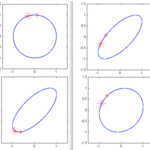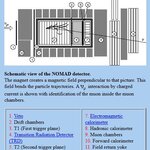Physics

Gauge symmetry is a clear, direct idea in EM, as I will detail. This property is essential, [correction: due to redundancy found in the 4-potential description of light and not any issue of the speed of travel for the wave]. Any proposal for gravity must also have [gauge symmetry]. I will show how the Lagrangians I have discussed over the last few months do not have this property, therefore they are wrong. I have altered three titles to say "RETRACTION", including a brief explanation at the start. [Note: the corresponding YouTube video titles have also been marked.] A different Lagrangian I…

I would like to signal an interesting article I have found on the web:
Brian Cox is wrong: blogging your research is not a recipe for disaster - by Sarah Kendrew
I tend to agree with Sarah, but I also think some confusion might arise in comparing blogs with peer reviewed articles. So forget peer reviewing and its problems for a moment. We live in a blog here, so I ask the question: what should scientific bloggers do? For instance, should they
- communicate the last minute potentially revolutionary results- use blogging with the purpose explaining to non specialists how scientists work and…

Neutrinos were first postulated in 1930 by Wolfgang Pauli, who won the 1945 Nobel Prize in Physics. “I have done something very bad today by proposing a particle that cannot be detected,” Pauli wrote in his journal. “It is something no theorist should ever do.”
Ever since, scientists have gone to great lengths (and depths) to detect the elusive 'ghost' particles.
After placing two large Water tanks near a nuclear weapons laboratory in South Carolina in the mid-1950s, scientists measured 3 neutrinos per hour and first documented their existence.
In the late 1990's, the Super-K experiment in a…

These days I am preparing a three-hour course of statistics for particle physicists which I will give at a winter school in a couple of months. This stimulating task forces me to find nice and simple examples of good and bad applications of basic statistics. Stuff with high didactical value, and hopefully also entertaining.
For today, I am happy with a simple illustration of why to be a physicist you need to know basic Statistics. The example is of course based on a real analysis in particle physics. It is based on a claim made in 1969 by McCusker and Cairns that they had observed the track…

My recent article on the relationship between Einstein's Theory of Relativity and superluminal neutrinos has triggered a series of comments. Some of them were reasonable, some others not. Among the reasonable doubts on this topic, there is a possible concern about the meaning of "limiting velocity", i.e. velocity that cannot be exceeded in the context of the theory. Could it be that we have found a new limiting velocity- the one of neutrinos- and the theory still stands up with a new value for a fundamental constant c? Could it be that the speed of light is not well measured?…

This is a continuation of "As is well known about elliptic trajectories" where I have put it as a sort of homework to find out which force fields support elliptic trajectories. The "problem" has been solved in a response to my first post. That other field is known as isotropic harmonic oscillator. It is discussed below. Now I will come with my personal story behind all this.
The awareness that there is also this other force field leading to closed elliptic trajectories came to me during my lecture in optics. Optics is not directly my main field and we were going through notes written by…

Chinese researchers have created a hypothesis for a quantum cloning machine able to produce several copies of the state of a particle at atomic or sub-atomic scale, or quantum state, which if produced could have implications for quantum information processing methods such as encryption systems.
Quantum cloning is difficult because quantum mechanics laws only allow for an approximate copy—not an exact copy—of an original quantum state to be made, as measuring such a state prior to its cloning would alter it. In their study, they demonstrate that it may be possible to create four approximate…

The Arxiv today features a quick-and-dirty study of the occurrence of electron-positron pair signal in the NOMAD detector, which obtains very strong bounds on the superluminal behaviour of energetic muon neutrinos like the ones whose speed has been recently and famously measured by OPERA.
A few punctualizations: first of all when I say "quick and dirty" it should not be read in the pejorative sense: it is a reasonable study which makes some approximations, which are inessential for the conclusions that the author (P.Cattaneo) reaches. Of course if the study is quick and dirty it means it…

Scientists in Australia are claiming that the laws of physics might be like local by laws which vary from one location to the next and that if this is true then Einstein’s relativity may also be wrong, the universe might be infinite, as I personally have always believed it to be, and some parts of this infinite universe could be more supportive of life than others and some might even be downright hostile. There are also apparently some interesting multiversal time implications, if the fine structure constant alpha can indeed vary from one location in the universe to the next.
Plenty of non-…

In a recent study, scientists used simulations to model the behavior of a closed, granular system comprising a chain of equal-sized spheres that touch one another and are sandwiched between two walls. Energy travels through this system as solitary waves, also known as non-dispersive energy bundles. When the system was disturbed by multiple energy perturbations, akin to someone tapping on each of the walls, the energy spread unevenly through the system.
Distinct hot and cold spots with an energy much higher and lower than the average energy per sphere persisted over short periods of time, and…